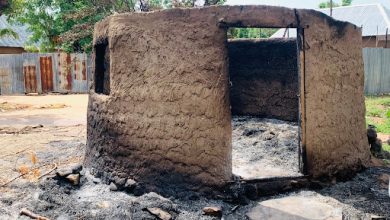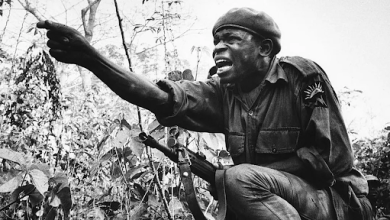Flood Erodes Kano Farmlands As Reports Show Bleaker Future Across States
Flooding has destroyed over 14,000 farms in five LGAs in the northwestern Nigeria state, but the situation is even worse in Burji of Madobi, where water turbulence from a broken dam has caused erosion of many farmlands.
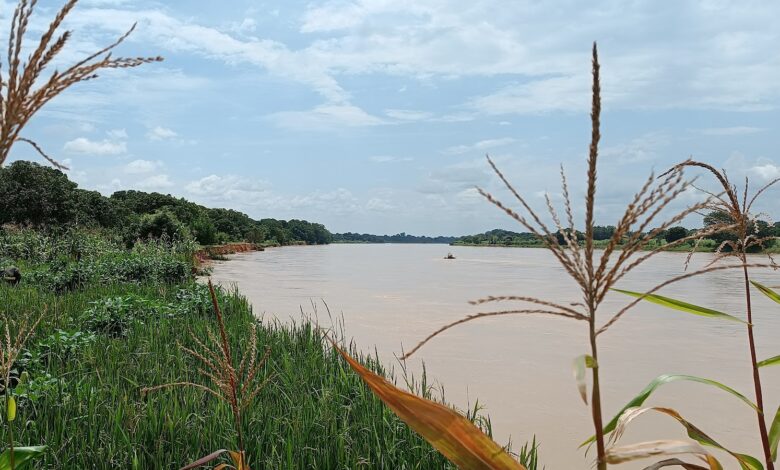
Ubale Tsoho was eager for harvest day. To ensure everything was okay on his farmland on the outskirts of Burji, Madobi Local Government Area (LGA) of Kano State, Northwest Nigeria, he visited it frequently.
So far, there had been sufficient rain to make farmers happy this season, and he was optimistic there would be a bumper harvest.
But one night in early Sept. 2022, the story changed and his hopes were dashed. Rain poured heavily throughout the night and disaster struck. The first was the collapse of two rooms and the fence surrounding his mud house. Thankfully, no one was hurt, but another devastating catastrophe awaited.
After his family and neighbours supported him in cleaning and clearing the house, he thought of the condition of his farmland. He had planted cassava, rice, and maize, and he was particularly worried about the maize. A neighbour had lost over 80 per cent of his maise due to torrential rain that changed its greenish colour to yellow.
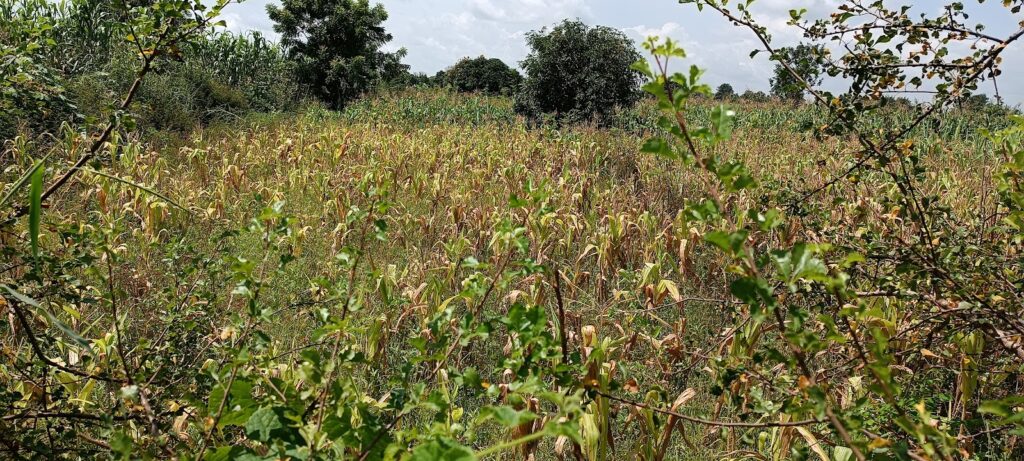
Tsoho got on his motorcycle and rode to the edge of the woods. Then he started trekking. A few steps in, he observed the damage done to his neighbours’ farms by the recent downpour. “Water submerged plants and uprooted some,” he recalled. But he silently hoped that his rice would remain undamaged, especially as water rarely affects it negatively.
Five minutes hike later, Tsoho arrived at his farm close to a flowing river he uses for irrigation in the dry season. He wondered if he was lost because it seemed like everything had disappeared. All traces of the farm had vanished. As he stood there, he heard the loud crash of an eroded cliff plunging into the water.
A turbulent water flow from Kano State’s Karaye Dam had destroyed his cassava, maize, and rice farm. What was once a vast farmland with numerous plantations had been reduced to a waterway. “Can you see those trees?” he asked, pointing to the centre of the water. “They used to be in the middle of my farm.” Tsoho had lost about two-thirds of his farm.
“I’m lucky I didn’t lose all of them, but I’m not even sure this one won’t go,” he told HumAngle as he stood on the edge.
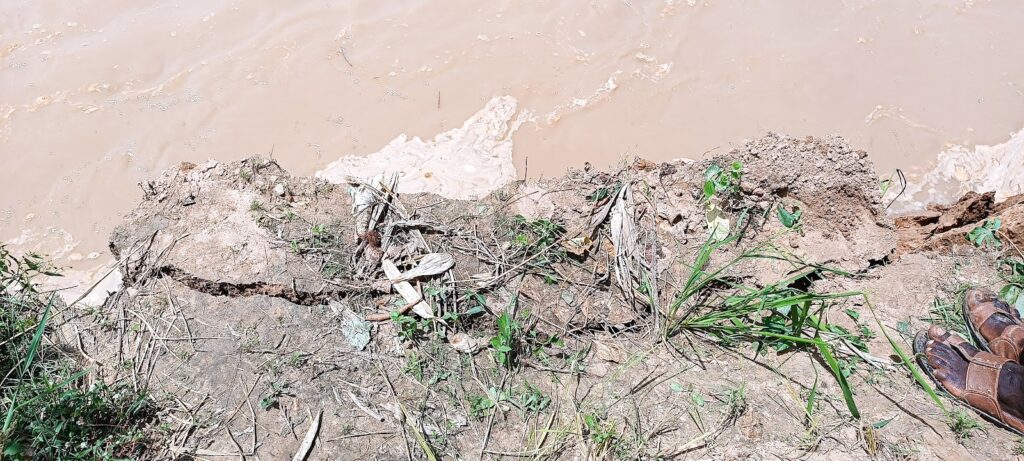
“It was like a dream,” he continued. “All my hopes and efforts gone, in just a day.”
Tsoho has been using the farmland for many years, and, despite coming face-to-face with different tragedies, from lack of rain to flooding, this is the first time he is losing almost everything.
“The only thing that we could benefit from the remaining land as the erosion keeps approaching is to cut the unripe rice and give it to animals,” he said, but that is still not possible as he fears that he would not finish before the erosion would continue.
Apart from Tsoho, many others were affected, including his brother Rabi’u Tsoho who remained speechless. There was also Isah Rabiu who held the root of a banana tree he had salvaged from his farm. He could plant it elsewhere.
“Nobody can tell you the estimate of what we have lost now because we are still losing,” Rabiu said, adding that the farmers had lost between “₦300,000 ($698) to N3,000,000($6, 977).”
Flooding has destroyed 14,496 farms and killed 23 people in 19 LGAs of Kano State, according to the National Emergency Management Agency (NEMA). Mustapha Ahmed Habib, Director General of the NEMA, disclosed this during an assessment tour of flood-affected communities in Warawa and Wudil LGAs.
Some of the affected mentioned in five local governments are Bebeji; 1,405 farms, Rano 260, and Dawakin Kudu 5,775.
He explained that the flood washed away 1,113 farms in Warawa Gishiri Wuya, 1,135 in Larabar Gadon Sarki, and 4,808 in Wudil. This indicates that the number may rise as the remaining 25 local government areas of the state are yet to be counted.
Deforestation is contributing to flood and increasing vulnerability to climate change.
Ismai’l Auwal, a climate activist and one of the organisers of the state’s #PlantATree movement, says the removal of trees by farmers contributes to the destruction of farmlands.
According to him, the removal of trees for fuel and other purposes has contributed to temperature rise, which has also disrupted the water cycle. “Trees help to consume water before it evaporates, thereby reducing the amount that could evaporate in the winter.”
Auwal wants the governments to encourage tree planting among farmers and residents. “As climate activists, we encourage farmers to plant cash crops that will supplement their income and discourage them from removing trees to expand their farms,” he explained.
Connecting to other states
Tsoho pointed out that the water flowing from Burji flows directly to Jigawa, and the flooding in some Jigawa villages, especially Hadejia, which used to be part of Kano State, could be attributed in part to the water coming from Kano. According to him, Jigawa is where most of Kano’s flowing rivers go.
“Many people have died in Jigawa, and two people have reportedly drowned in this water in Madobi. This is something we rarely see, even in rainy seasons, but this year has had its challenges,” he told HumAngle.
This is not the first time flooding has washed away farm produce and destroyed buildings in Jigawa. Similar incidents occurred last year, and the state government blamed the ongoing flooding on the Hadejia River, which they said becomes uncontrollable every year.
The main issue, however, is the food insecurity that the flooding is likely to cause. This has continued to threaten Nigeria, with insecurity ravaging many parts of Northern Nigeria and flooding destroying farmlands, especially since the Southern part of the country has relied on the North for agricultural produce.
The Nigeria Hydrological Services Agency (NIHSA) recently warned that flooding will continue until the fourth quarter of 2022, and reports of flooding on a small or large scale have come from many states in Nigeria, but the Northwest and Northeast have been particularly hard hit.
Support Our Journalism
There are millions of ordinary people affected by conflict in Africa whose stories are missing in the mainstream media. HumAngle is determined to tell those challenging and under-reported stories, hoping that the people impacted by these conflicts will find the safety and security they deserve.
To ensure that we continue to provide public service coverage, we have a small favour to ask you. We want you to be part of our journalistic endeavour by contributing a token to us.
Your donation will further promote a robust, free, and independent media.
Donate HereStay Closer To The Stories That Matter



